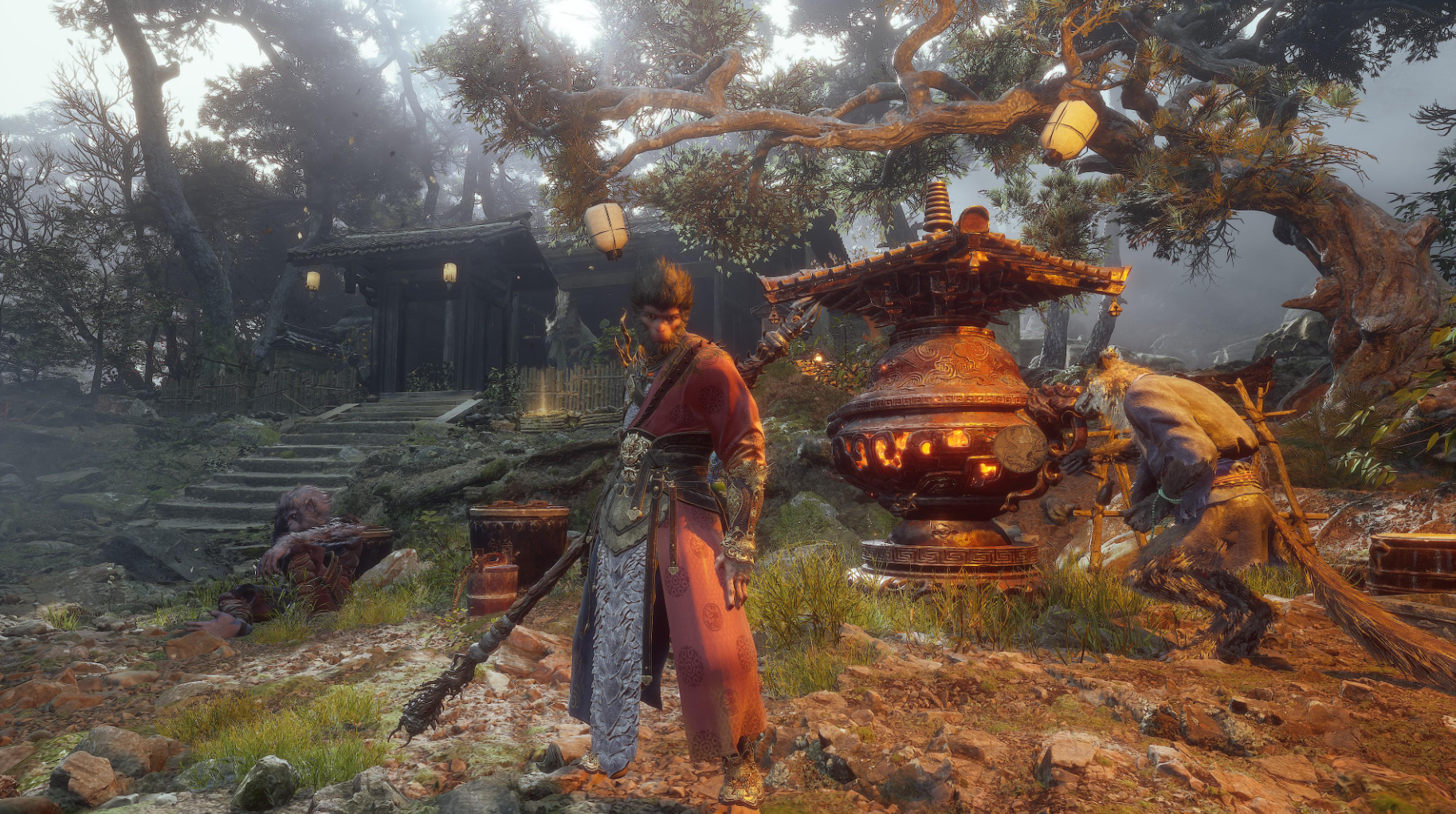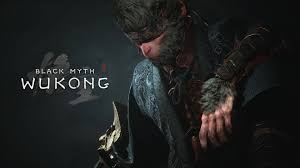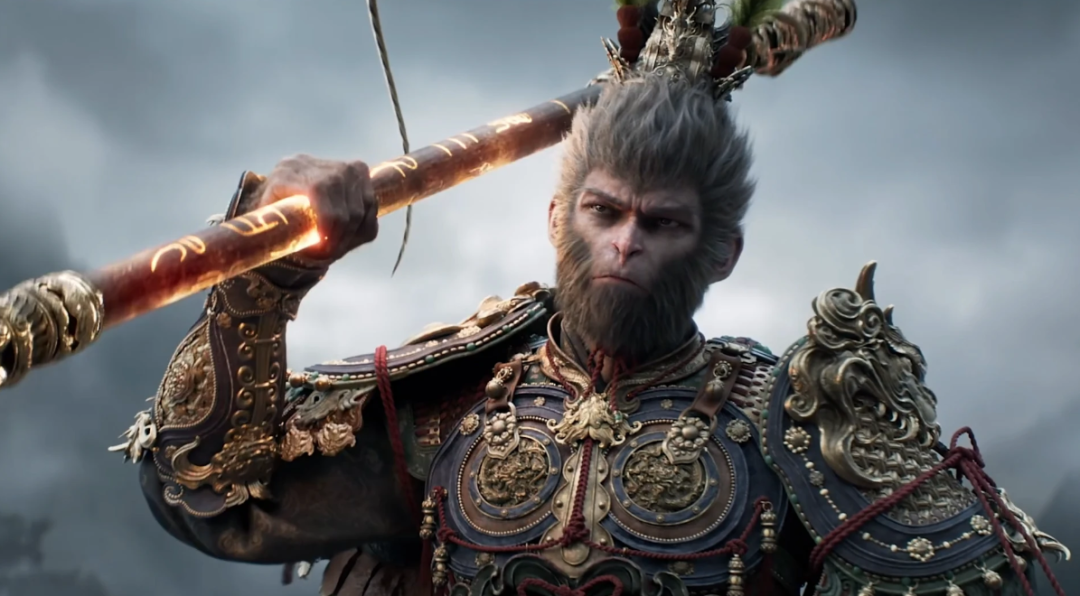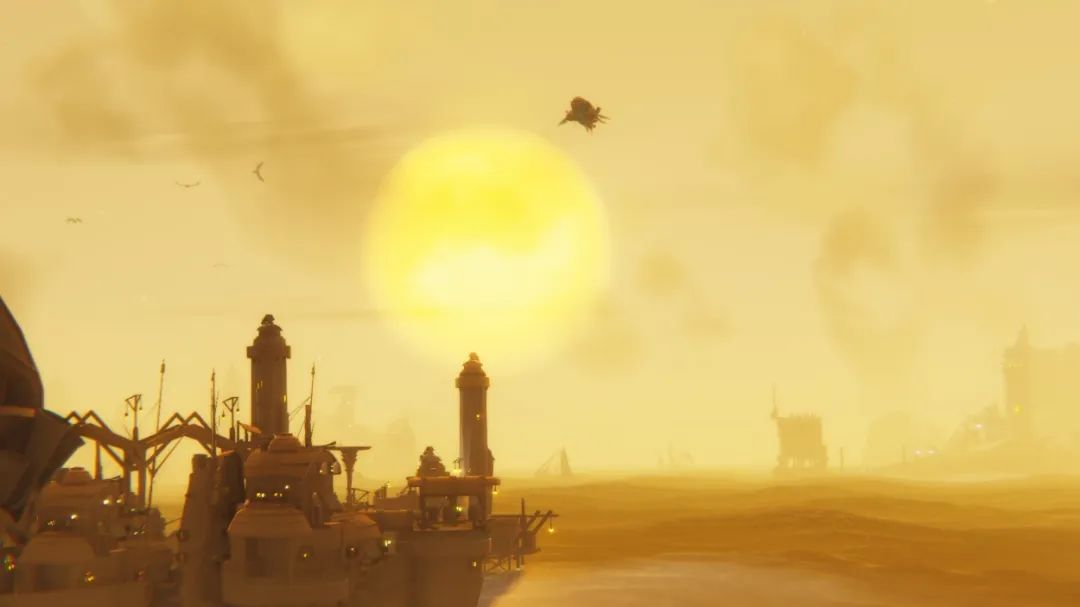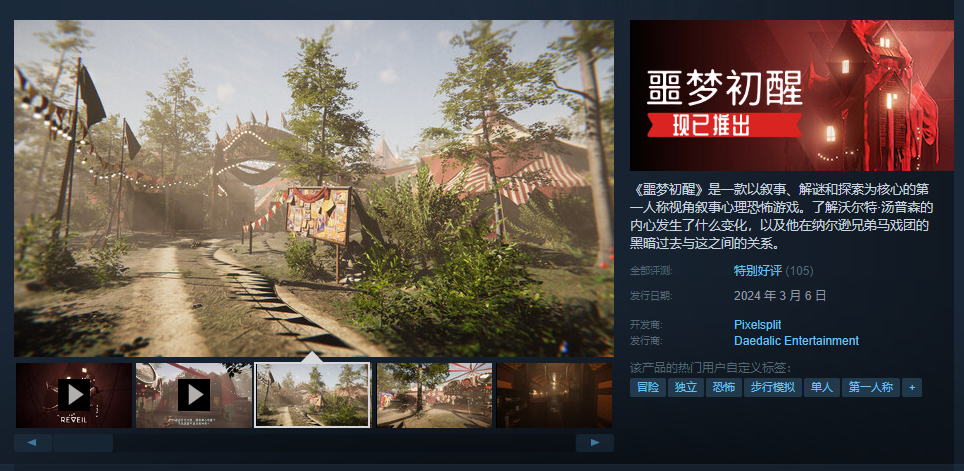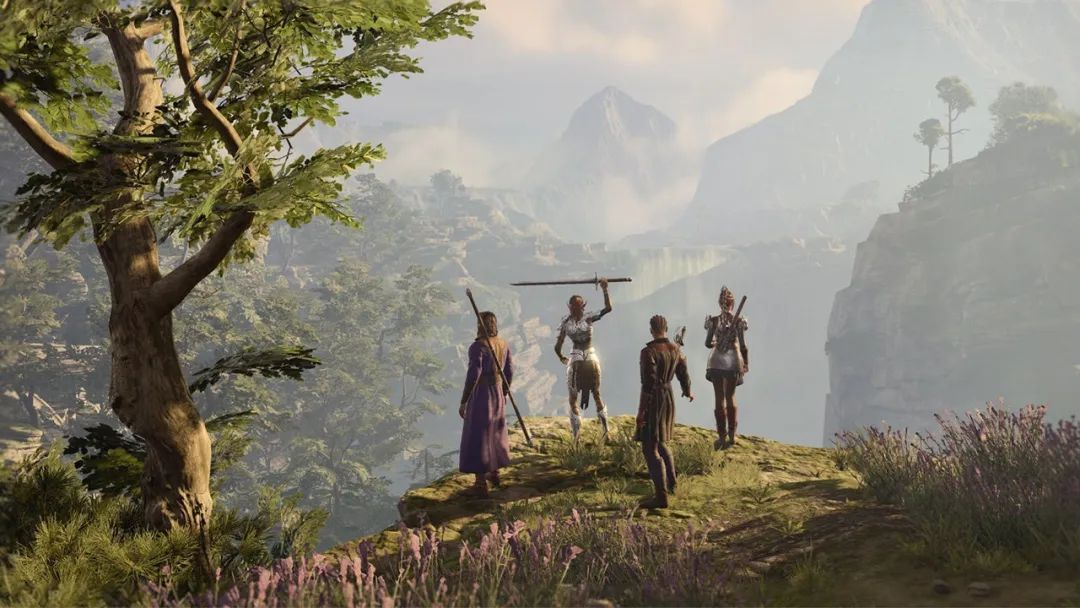
In 1997, in a small electronic equipment store in Belgium, Swen Vincke, or “Swen” as players call him, and a few friends who also love video games created a game team belonging to them, and since then began the “stubborn” journey of Larian Studios. Since then, Larian Studios has been on an “obsessive” journey.
Obsessive is not a pejorative term here.
Since its inception, Larian has worked almost exclusively on the “outdated” CRPG (C For Castoff), as well as their own signature game, the Divine Realm series. It’s been a bumpy ride for them: a long journey from purely niche work to mass acceptance.
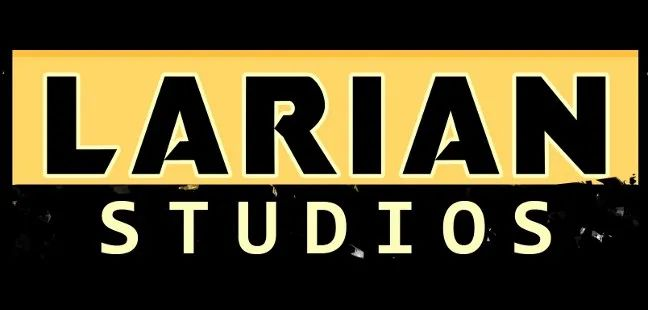
In 2014, the TGA Game of the Year that year was Dragon Age: Inquisition, and Larian sat in the corner with his breakout hit Divinity: Original Sin, looking glumly at the CRPG old-timers holding the trophy on stage;
In 2017, that year’s TGA Game of the Year was “The Legend of Zelda Breath of the Wilderness”, Larian came to the stage with the critically acclaimed “God Realm: Original Sin 2”, but he could only look at the various gods fighting and returned in defeat.
Perhaps it is destiny, six years later, once not qualified to compete with Nintendo, Larian finally came to the game of the year candidates, straight face “The Legend of Zelda Tears of the Kingdom”. But this time, fate isn’t playing any more jokes on them - the
At the 2023 TGA, Larrian was nominated for a total of eight awards, and ended up taking home six of them:
Best Performance (Neil Newbon, Baldur’s Gate 3 Asdelen), Best Community Support, Best RPG, Best Multiplayer, Gamer Voice, and that crown jewel: Game of the Year.
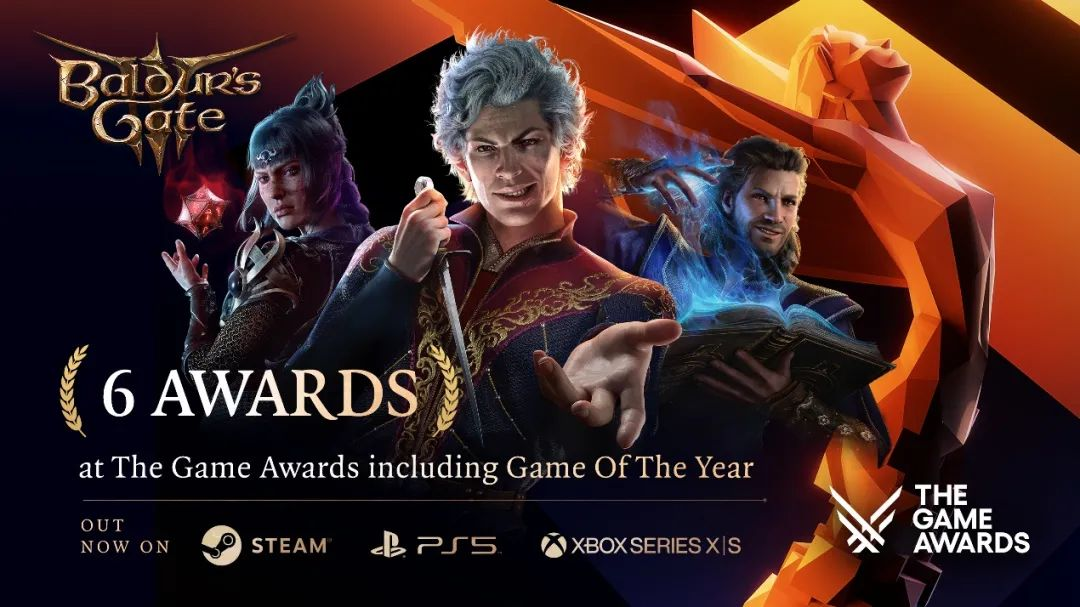
Larian wrote a stirring saga today, handily turning over a whole new chapter in the CRPG chronicles.
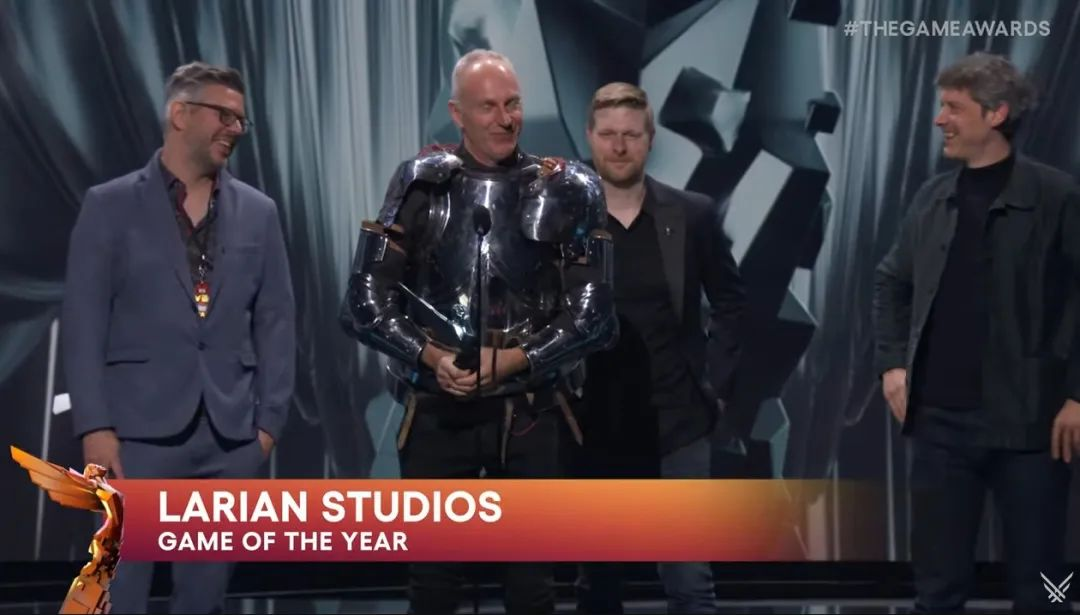
- Glory is mine!
Larian has waited 26 whole years for this ending.
Setting Sail
Larian’s dream originated from a story studio founder Swain heard as a child.
Swain recalled that when he was a kid, he was chatting with a friend who described an amazing game: the game was based on DND, with a high degree of freedom, and NPCs could respond to questions raised by players in real time, while your teammates would also react to them. …… For a long time after this, Swain felt that he was being cheated, and that he had played a lot of games. , never encountering anything that his friend blew off as esoteric - until he met Genesis 7, the fantastic game that haunted him.
Objectively speaking, from today’s point of view, Genesis 7’s combat system is mediocre, and the characterization is difficult to impress the player. What really impressed Swain was the game’s sense of exploration, the sense of surprise that every corner hides a secret that Swain recalls to this day.
Swain later admitted that his own fuzzy memories and exaggerated imagination may have embellished the experience of Genesis 7, but it is undeniable that since then, Larian Studio’s gaming philosophy has been quietly formed, take a look at the backpack interface of Genesis 7, doesn’t it look very familiar? They’re still using this classic interaction design in Larian’s latest, Baldur’s Gate 3.
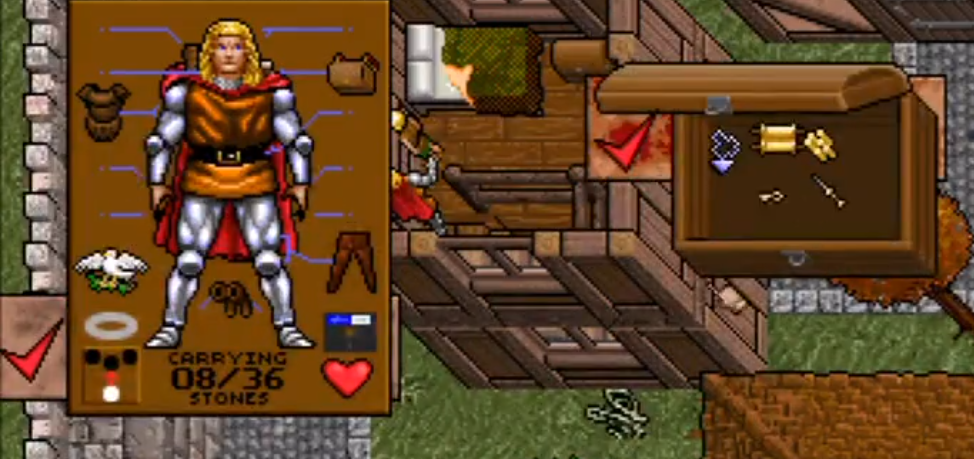
- Incidentally, game producer Todd Howard’s favorite work is also Genesis 7
To create a game like Genesis 7, Swain and his friends developed Ragnarok Unless (hereafter referred to as Unless), a game that required players to solve a number of non-linear, original quests, which Swain describes as “in-game NPCs whose AI reacts to the player’s actions, even if the player chooses to even if the player chooses to wait and see what happens, they will take action”, almost like Genesis 7.
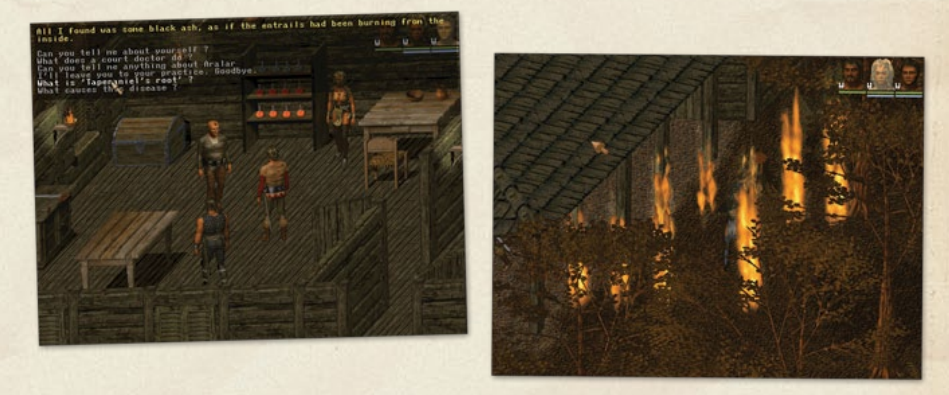
Larian was still a fledgling team of newcomers, and the overall quality of Unless was naturally not that great, but Swain and the team felt that their debut was so good that the only problem was how to market it.
Fortunately, Swain was able to secure two tickets to the European Computer Trade Show (ECTS), which was open only to industry professionals, and he went around with his floppy disks and screenshots of the game, and managed to attract Atari, which was attempting to enter the PC market, and the head of Atari at the time signed a $50,000 contract with Swain, which was supposed to be Ryan’s first pot of money.
Unfortunately, soon after, Swain received a call canceling the contract, the then CEO of Atari had to retire immediately due to a heart attack, and then Atari was merged, which meant that the Larian empire lost their start-up capital, and the business was over before it even officially began.
The break in the funding chain hit the team hard. Swain recalls eating sandwiches dipped in brown sugar, while some quit and some stayed the course, Swain and the team were in desperate need of money to keep their fragile dream alive.
Desperate, Swain made two decisions: one was to cut back on resources by temporarily developing a physical RTS game called L.E.D. Wars to alleviate the financial crisis, and the other was to cut back on expenses by building a brand new game based on Unless, which Swain named The Lady, The Mage and The Knight (later LMK for short) and is actively seeking publisher representation.
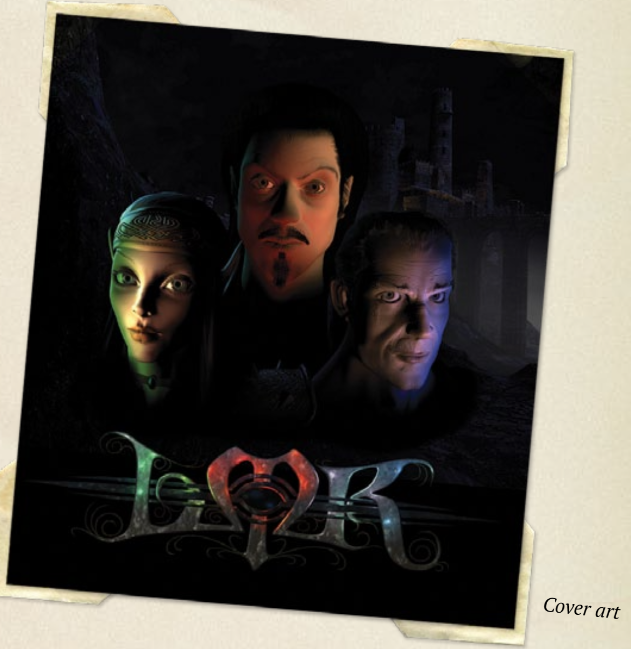
- Cover of LMK
Over the next few months, Swain and the team spent their days perfecting the details of LMK, and their nights working overtime on the process of making an RTS game. Luckily, both games found suitable buyers; LMK was signed by German publisher Attic, while L.E.D. Wars was picked up by German publisher Lonos, and was successfully released in 1997.
L.E.D. Wars was just a “milkshake” developed on the way to making LMK - or the ultimate game in their minds - thanks to the game’s successful release and the publisher’s investment. Thanks to the successful release of the game and the investment of the publisher, the team is finally taking shape.
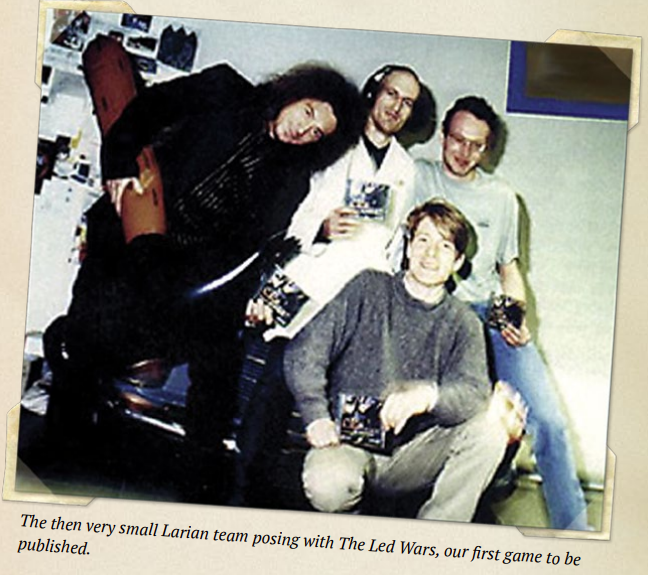
In 1997, the real Larian Studios was set up in a small electronics store, in poor conditions and with little money. In this small room, ventilation was provided only by the window in the door, and the tables and chairs were made of Coca-Cola cartons.
Swain later recalled that people often teased that the empty Coke bottles around the table were their life-saving money, as they could always be exchanged for income through scrap recycling.
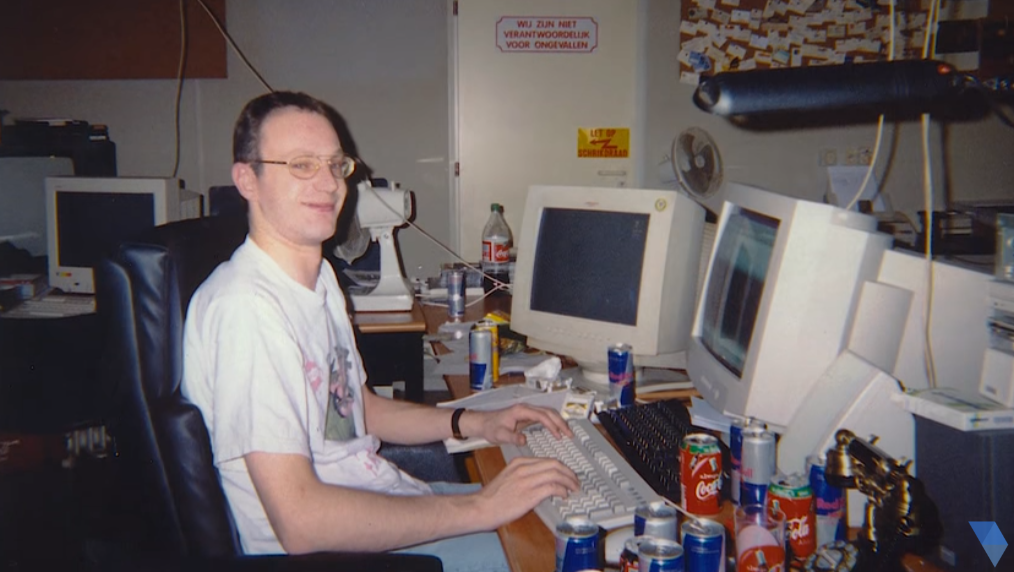
But I’m afraid Swain didn’t think at the time that it wouldn’t be long before they actually used the life-saving money.
Chaos on the beach
In an interview with the foreign media Eurogamer in July this year, Swain mentioned the crucial game at the beginning of the venture: “At that time, we were working on a game called LMK, which was really Divinity: Original Sin 1, as simple as that.”

So what kind of game is LMK, anyway?
In the developer log released on the 15th anniversary of Larian’s founding, Swain reveals to us some specifics of the game, such as the game’s opening, where three characters, the Lady, the Sorcerer and the Knight, wake up on a beach, and the player will need to manipulate these characters one by one until a squad of three is assembled. …… Perhaps you’ve already noticed that this is where Larian Ancestral Beach’s starting point.
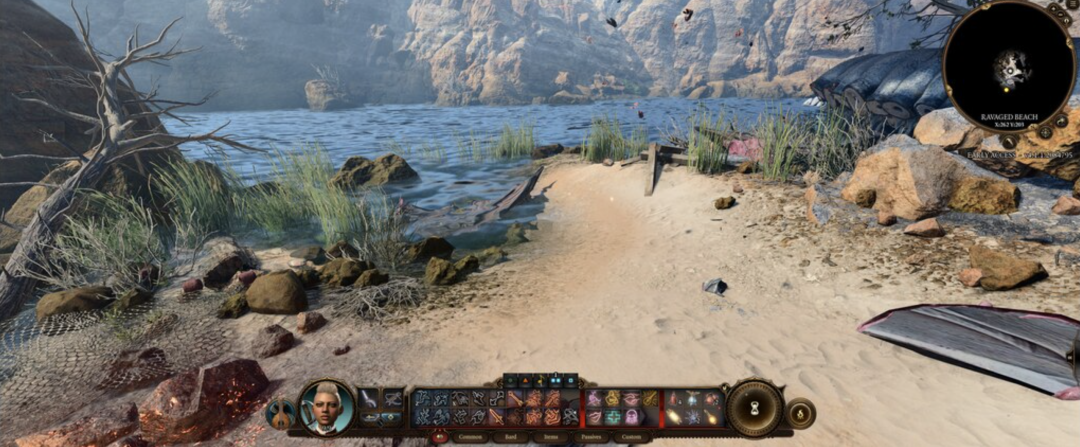
- Hey, You.You’re Finally Awake.
On the gameplay level, LMK emphasized freedom of play, such as the ability to fill a bottle with water, add red dye, and sell it as a healing potion, a clever design that was well ahead of its time, and worthy of praise even today.
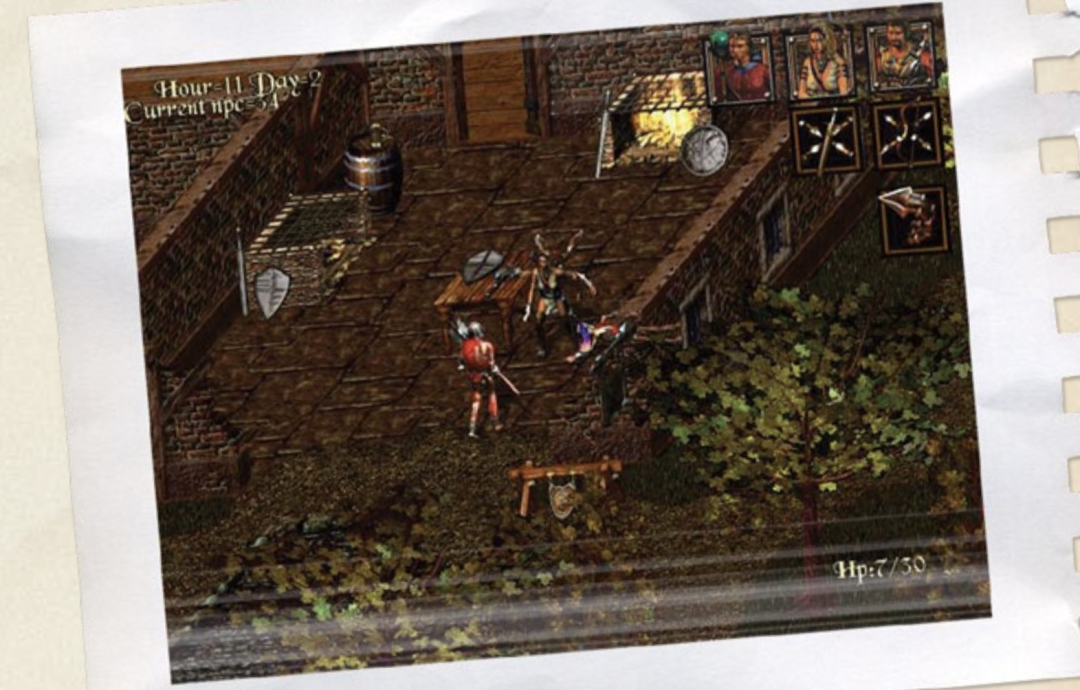
- Early development footage of LMK
The problem was that Attic, the publisher with whom Larian had partnered, didn’t seem too keen to hear them describe their ambitions, and after E3 1998, when Diablo 2 shocked the industry - and Attic, too - they marveled at the graphical detail of the game, and asked Larian to convert LMK to 16-bit for the production. The original LMK was a 16-bit game.
The original LMK was an 8-bit game with 256 colors, while the 16-bit Diablo 2 supported 65,000 colors, and the intuitive graphical difference was indeed enough to destroy LMK’s business prospects.
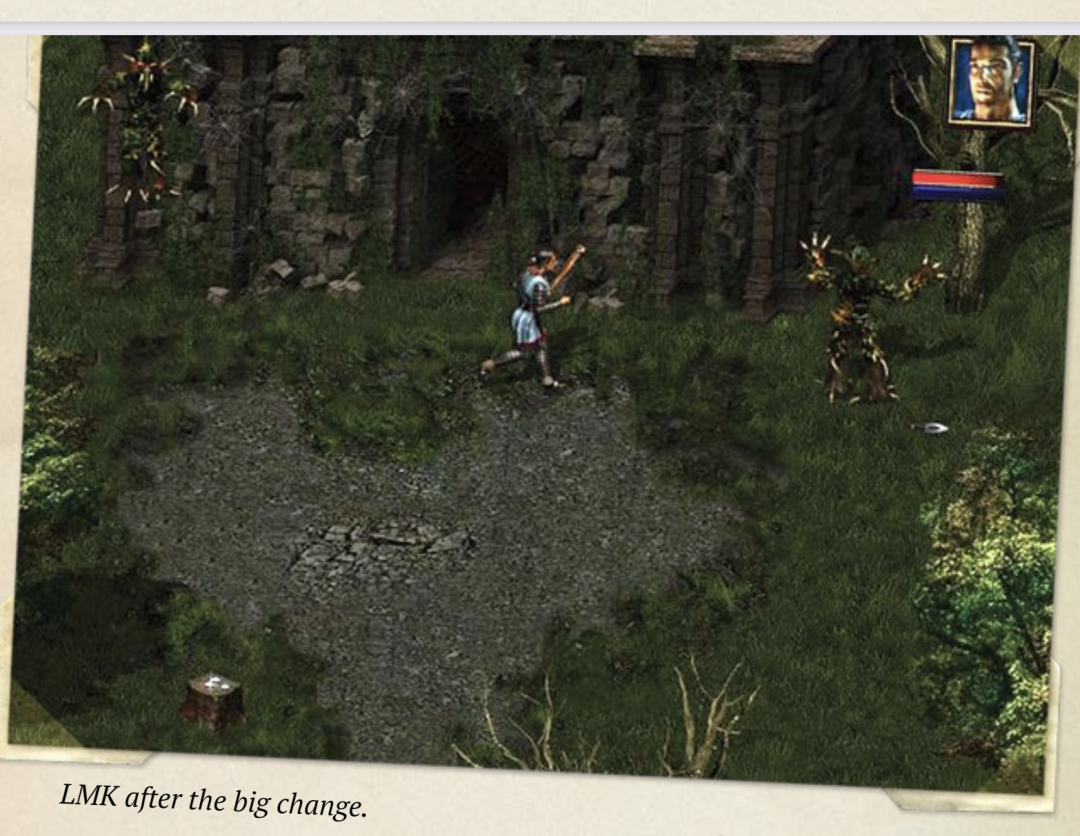
- Modified LMK graphics
However, just as Larian shifted the direction of development and went all out on LMK, the bad news struck again - publisher Attic went bankrupt.

- Attic’s list of game releases stops at 1997.
Larian’s financial chain broke once again, and Swain meticulously described those grueling years in a later interview: “The money we had in hand only lasted another month, and at the end of the month I couldn’t pay my salary, and the employees from Germany were stuck in Belgium because they couldn’t scrape together the money for the trip back …… “
The days of no money were hard, Swain took the guys to do some outsourcing projects to pay off various debts, Swain said that they made about 20 to 30 games at that time, and the development of LMK could only be forced to suspend, until the end of 1999, the German publisher CDV reached out to them, and Larian was able to rise from the ashes again.
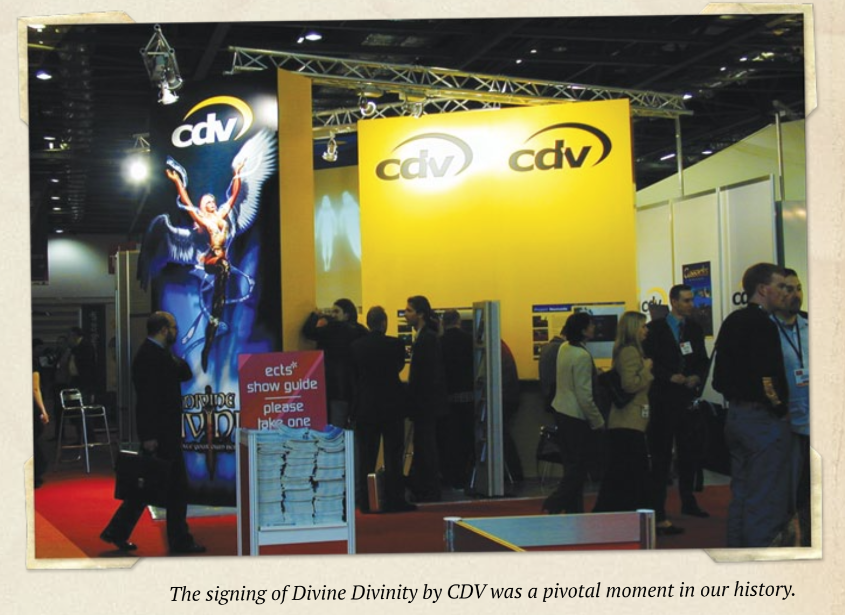
Let’s put aside the bitter history between Larian and CDV for a moment and look at Larian’s side of the game’s development. With the bankruptcy of publisher Attic and the rights to LMK in an unsettled legal dispute, Larian had to swallow the pain and use LMK as a prototype for a brand new title, which was the foundation of Larian’s career and the place where his dream began - Divinity.
The Divine Realm, which was born out of the same school, highly follows the features and strengths of LMK, including complex NPC AI, strong interactivity with the world, a huge branching storyline, and a combat system that mimics that of Diablo.
Of course, this was only the best of what Swain had in mind for Divinity, because during the development of the game, the publisher they encountered this time around, CDV, doubled down and started working against them.
CDV actually supported Larian pretty well in the early stages of the game’s development, and Swain says that the first thing they did after getting their investment was to relocate, get a new office and some decent hardware, not to mention that at least this whole building is a lot nicer than the old, crappy electronics store they used to have.
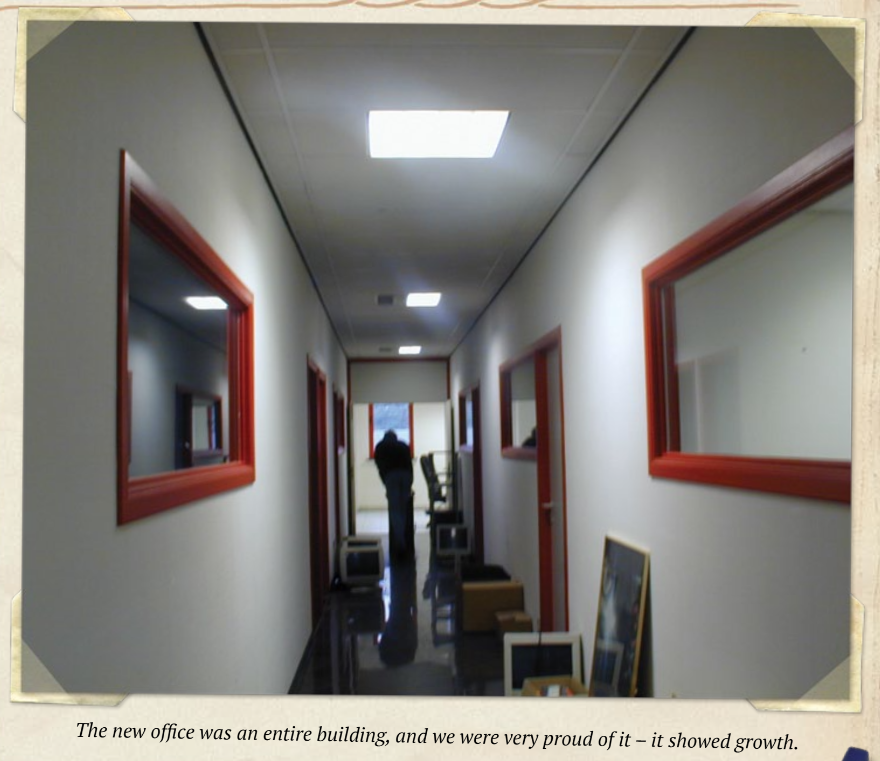
CDV’s patience with Larian wore thin as the game progressed, and in early 2001, five months before the game’s release, Swain was doing press interviews, unaware that his game had been finalized and would soon be available for purchase, and when he told CDV that the game wasn’t ready, he got a response that said, “The game isn’t ready yet! “When he told CDV that the game wasn’t ready, the response was, “We think the game is good enough to go on sale”.
Unlike all of CDV’s previous successes, they weren’t sure if the game was going to be profitable, so there wasn’t much value in investing more time and money.
But Larian needed more time and money, and they always believed that the only way to sell a game was to polish it with care. To that end, Swain wrote a 20-page letter trying to explain the specifics to the publisher, pleading with them to give them a little more time, because Swain really didn’t want to see the fruits of his five years of hard work ruined in the last step before the finish line.
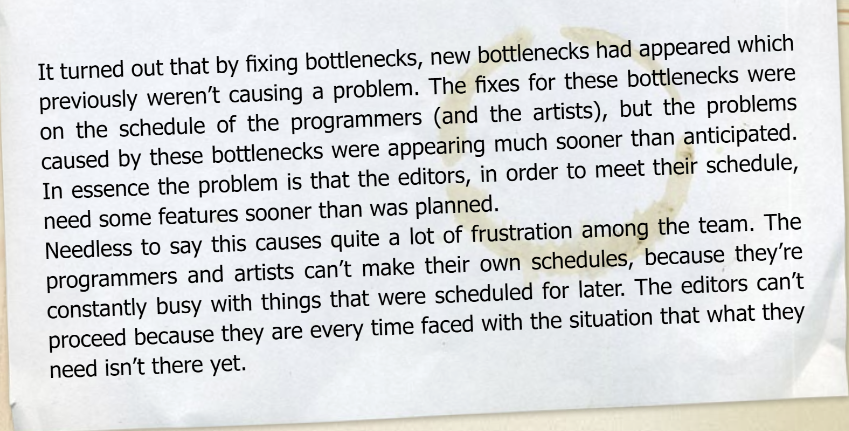
- Part of the letter
As it turned out, no resources were given to the late development of Divinity. Thus, Divine Realms was officially released in September 2002, before the last chapter had been fully polished. The game did receive some favorable reviews, for example, the well-known media outlet IGN gave the game high praise in their review a month after its release:
“Divinity is a very accessible and enjoyable game …… While BioWare’s resources are tied up in lightsabers and Black Isle Studios is working on a game without a strategic pause mode, perhaps Larian will step up to the plate and continue to carry the CRPG banner in the near future. “
Obviously, Larian was not equipped to carry the CRPG banner at that time.
Divine Realms is a good game, and would have been a better game if it had been a little less buggy. The original release of Divinity had about 7,000 bugs, including some nasty ones like bad files, and publisher CDV arrogantly believed that “we don’t release games with bugs,” and refused to push out patches to fix them, leaving Swain and the others to work through the night on fixing players’ corrupted files one by one.
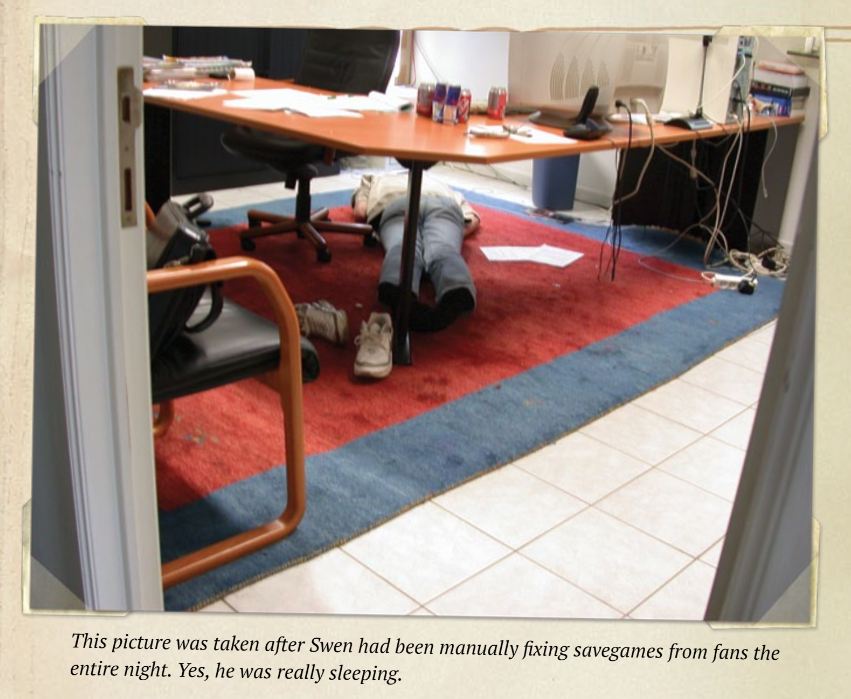
- Swain fell asleep on the floor after fixing bugs all night.
What’s worse, when Swain received his royalty report, he realized that he hadn’t made much money at all, and that most of the profits had been taken by the publisher, with only a few dollars going to the whole team. At the same time, CDV pulled their investment in Larian, feeling that Divinity was a terrible game and that there was no point in continuing to throw money at it.
Years later, Swain mentioned two points in time in interviews that were hard for him to let go of, one in 1999 and the other in 2002. In that year, Larian Studios was reduced from its original 25 people to just three, and even the parking lot downstairs was quite empty.
A Bridge Across a Sea of Bitterness
In 2018, in a documentary about Larian, David Walgrave, executive producer of Larian Studios, recalled the dilemma of that year, “Initially, when I worked at Larian, we signed weekly contracts, and every Friday afternoon we’d sign the contract for the following week, because who knows how long the team would last. “
That’s exactly right.In 2002, Swain was sitting alone in an empty office, desperately contemplating the future fate of the studio and Divine Realms.In the end, Swain came to the conclusion that he would continue to take on outsourcing and make children’s games.
Open Larian’s wikipedia page and you’ll find a couple of educational games that not many people have heard of, Swain and his team initially made a piece for a TV station called Ketnet Kick, a community-based game in which kids could make all sorts of dances and animations, and then submit their results to the TV station to show off their work to a worldwide audience.
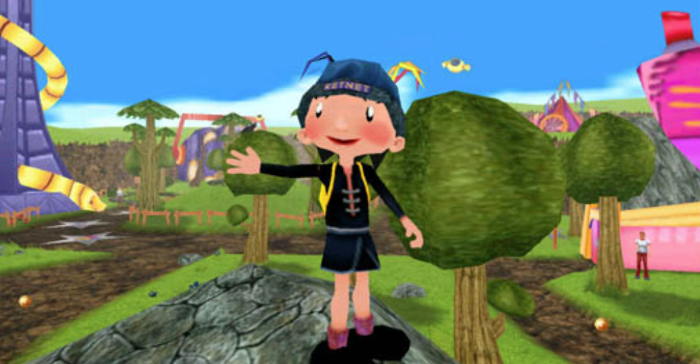
But while outsourcing, Swain still couldn’t let go of the ideal in his heart. He clearly wanted to make an awesome CRPG in the first place, but how did he end up in this situation? He began to try to recruit, recruiting like-minded developers, and took the initiative to study the mystery behind the game distribution, learning how to hold the game revenue in their hands.
After surviving the downturn with outsourced revenue and a loan from the bank, Larian set his next project as Beyond the Divine.
The game was clearly positioned as an indie outing to make a little money, and all the staff involved knew it was a compromise in the face of harsh realities - there was no energy left to make a better, more groundbreaking new game.
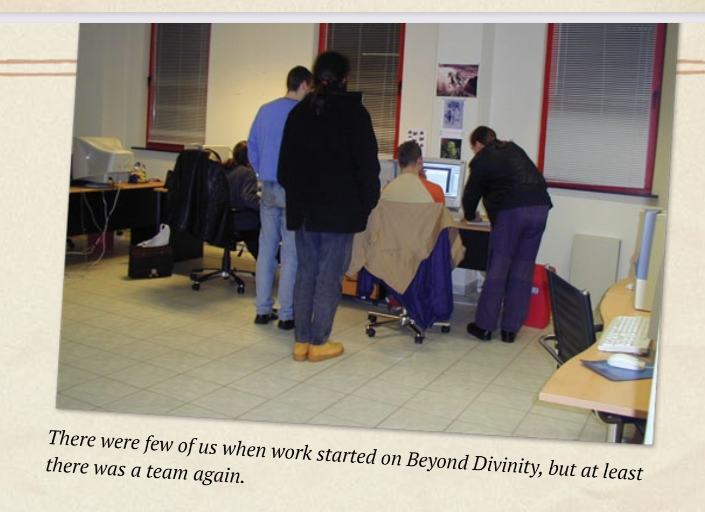
- The team at the beginning of the development of Beyond Gods
There’s not much to talk about in Beyond the Divine, the gameplay doesn’t differ much from its predecessor Divine Realms, and to keep things fresh for the player, Larian prepared a brand new story, rewrote the quest lines, slightly tweaked the monsters in the game, the characters’ appearance, and made up for some of the regrets of the previous game. Overall, the game didn’t stand out, and Swain simply confessed in an interview, “It’s probably the worst Divinity game we’ve ever done.”
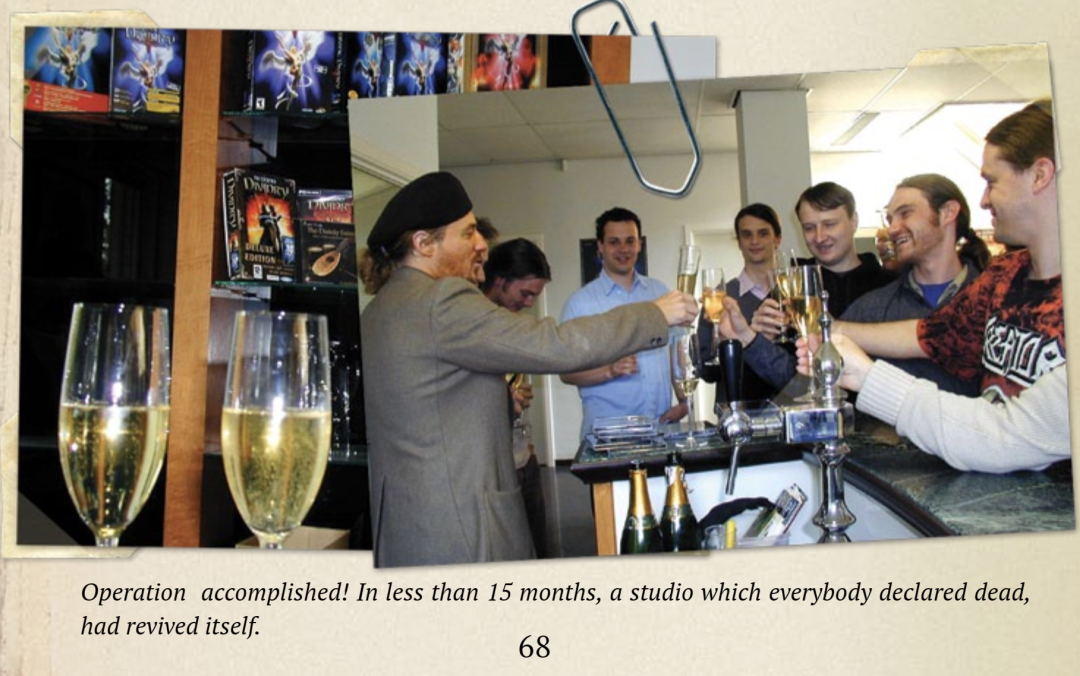
Between 2005 and 2006, Larian, who had completed Beyond the Divine Realm, assembled a small team that made early versions of Divine Realm 2 and posted screenshots of the game on their walls, images that served as a constant reminder to the entire team that we were really going to end up making this game.
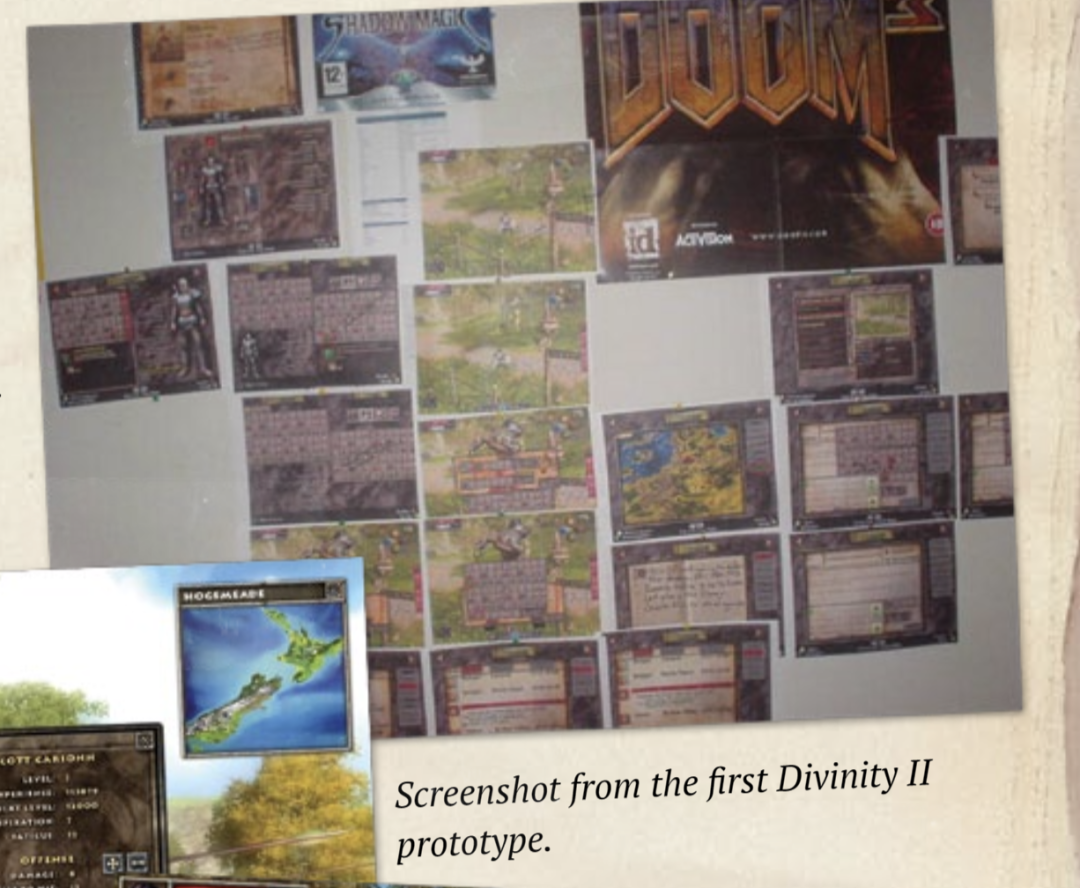
So did Larian really make the ideal Divinity 2 they had in mind? The answer, of course, is no. Simply put, it was another “Larian-esque” over-ambitious failure, with Swain and the others failing to learn from their previous bankruptcies, and cramming too many unattainable elements into Divinity 2: the elimination of multiplayer modes, the shrinking of the ambitious script, the cutting of fun gameplay… …In the development insider’s guide that came with the later-released Divinity 2: Developer’s Cut, Larian filled 20 pages with the marvelous visions that were so sound back then.
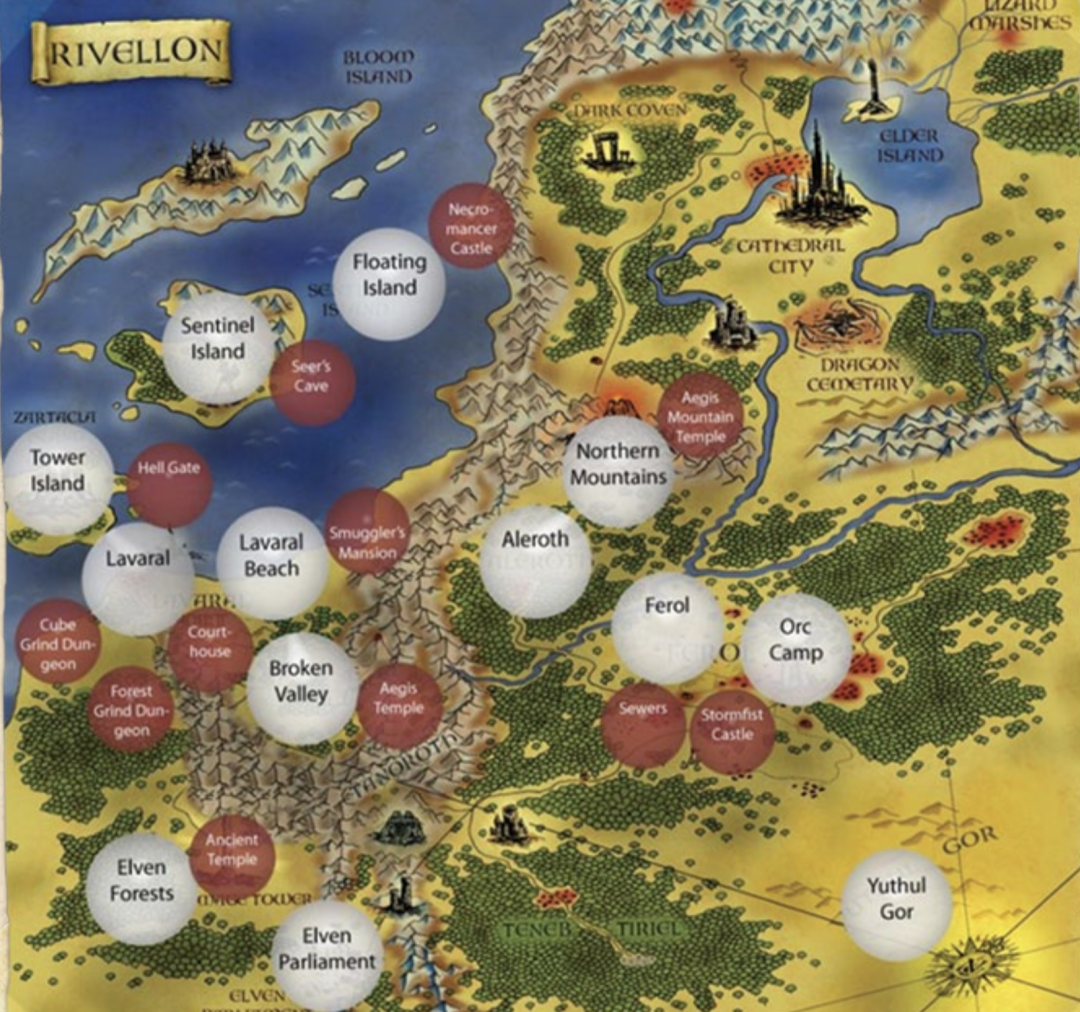
In addition, presumably not confident enough in the team’s financial reserves, Swain and the gang approached the publisher again during the production of Divinity 2, and as a result, the same tragedy that occurred a few years ago repeated itself, with cost overruns and tight deadlines forcing Divinity 2 into an early release, with the publisher only willing to pay half of the budget. …… I know that we’re all tired of reading the same story here. We’re all tired of the story, so I won’t expand on it in detail here.
The next year, Larian carried forward the spirit of mending the fold, and made a documentary for “Divinity 2”, and also tinkered with an “enhanced version”, which made the game’s Metacritic score rise from the original version’s 72 to 82, a kind of leap forward, and also proved a simple truth to everyone. It also proved a simple truth: as long as you give Larian enough time and budget, they can make a good game.
After this battle, Swain finally realized why the team had lost so many battles; their style of play was completely at odds with outsiders, and with the intervention of a publisher, game development would only sink deeper into the mire.
It was time to say goodbye to the publisher, and in 2013, Larian changed his fortunes forever when he launched a crowdfunding campaign on the crowdfunding site Kickstarter for Divinity: Original Sin.
A City Waiting
On Swain’s personal blog, he has written an article about how to evaluate a CRPG. Swain breaks down every aspect of CRPGs in detail and argues that classics like Genesis 7 and Fallout 2 are among the undisputed high scorers.
Swain would love to list some of the newer games that score high in his own scoring system, but unfortunately, he’s slow to find modern RPGs that fit this set of criteria.
If you can’t find one, why not make one yourself?
Unless, LMK, Divinity 1 and Divinity 2, four installments with a consistent gameplay philosophy. The highly developed gaming industry was more than enough to support the pie-in-the-sky game designs in Swain’s head, and Swain was convinced that the next game would be the only opportunity he would ever have in his life.
Since 2010, a PowerPoint has been circulating within Larian, and many important decisions have been written into the PowerPoint and presented to the entire staff. During the production of Divinity: Original Sin, the phrase “polish is the key to the success of the game” was included in the PPT, and Swain took great pains to tell the staff that it was important to polish with care.
But what he didn’t tell his staff was that the studio was in a serious financial crisis, and there was no second bank in Belgium willing to lend them money. According to Belgian regulations, when a company closes down, only the boss is responsible, and the staff will be well protected by the law, so Swain didn’t want to put too much pressure on the team.
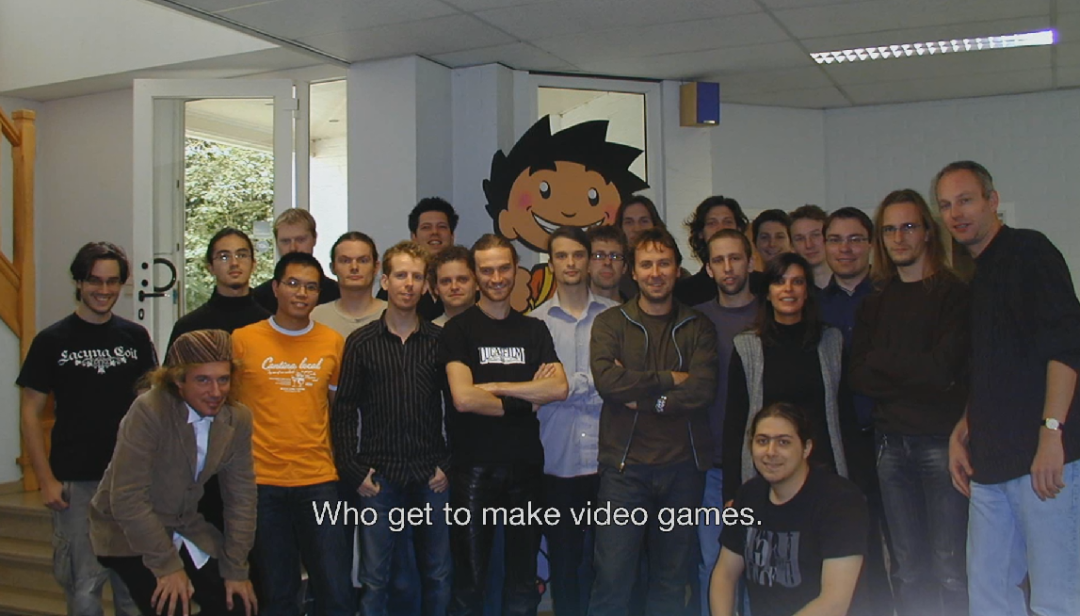
“If I hadn’t crowdfunded, I probably would have sold everything I owned and just kept doing that.” Swain later recalled the incident with a light-hearted laugh.
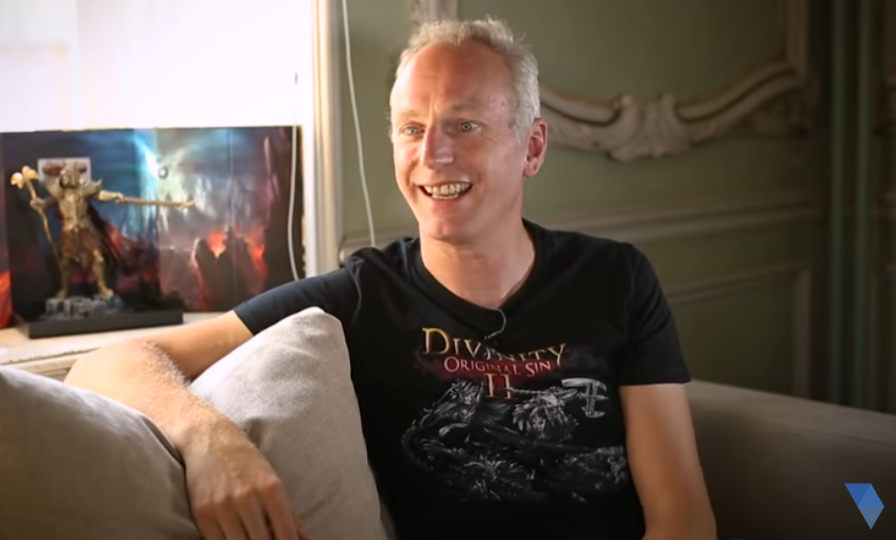
The story of what happened after that should be well known to everyone. released in 2014, Divinity: Original Sin was a huge success, selling 500,000 copies in three months, and the revenue helped Larian pay off all the loans he had previously owed, making the studio profitable, and more importantly, Divinity: Original Sin confirmed the fact that, with everyone saying that turn-based RPGs had lost their market, Larian had proved to the world the the potential of this game genre.
After this, Divinity: Original Sin 2 was on the table. Larian used the same crowdfunding format as its predecessor and actively listened to players, tweaking the poorly-reviewed armor system and narrative sections to keep the game moving towards that perfection in FUME mode.
In September 2017, the official release of Divinity: original sin 2 was released, and in an interview this year, Swain revealed that it had more than tripled the sales of its predecessor. It was also the release of Divinity: Original Sin 2 that made Larian’s name, as they aggressively expanded, establishing branches around the world and growing from a small team of 46 people during the development of Divinity: Original Sin to a large team of 400 people.
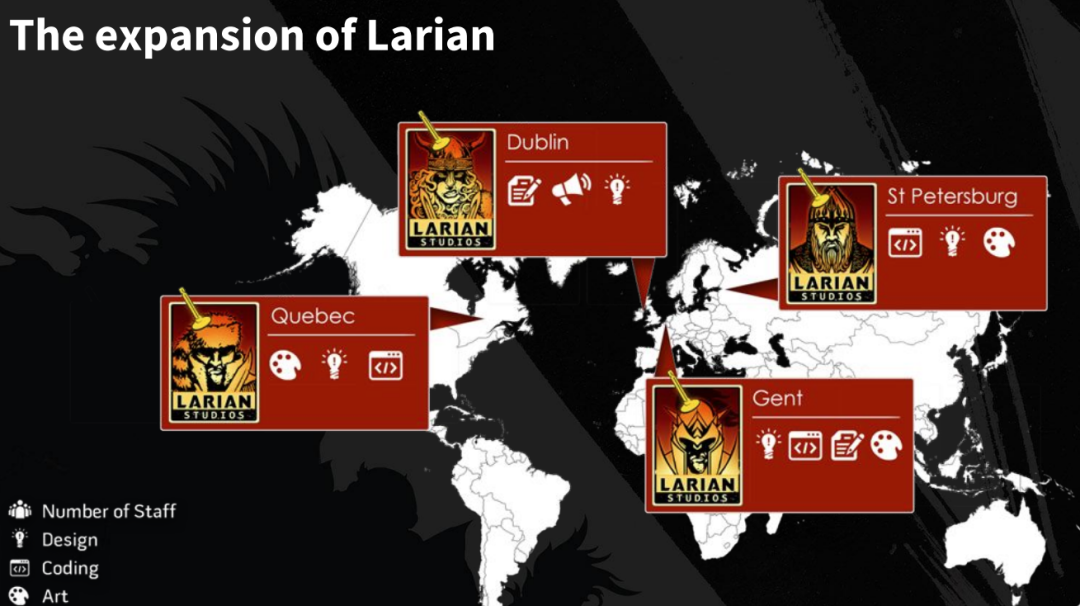
“I vividly remember some of the bad choices I made during the development of Divinity: Original Sin, and hope to avoid repeating them in the next game.”
The next game, instead of the decades-old Divinity series, is the gold standard of CRPGs, Baldur’s Gate.
Prior to the release of Divinity: Original Sin 2, Baldur’s Gate holder Wiseguy reached out to Larian and asked them to make a Baldur’s Gate game.
Swain was ecstatic to hear about it, and traveled to downtown Seattle to discuss many specific ideas for the game with Visechi employees. The initial vision was very simple: use the engine from the Divinity series, build Bode’s Gate and that forgotten realm, and then finally slap on the DND 5th Edition rules, and it would be a done deal.
Larian also did so, in fact, “Baldur’s Gate 3” open preemptive testing of the three years, there will always be players complained that “this is like” Divinity: Original Sin 3 “rather than” Baldur’s Gate 3 “, concerned about the domestic player community friends should remember,” Baldur’s Gate” posting, in the past a long period of time was wouldn’t talk about Baldur’s Gate 3.
Larian inherited the previous production of “Divinity: Original Sin” fine tradition, listening to player feedback, timely correction of potential problems, the past three years, “Baldur’s Gate 3” pushed a total of 22 “community updates” to “nagging” form of the game to tell players about the changes that have occurred, word for word. In the past three years, Baldur’s Gate 3 has pushed out a total of 22 “Community Updates”, telling players about the game’s changes in the form of “family news”, with a sense of companionship that is full of humanity.
As the game’s release date approaches, Swain is getting more and more anxious. If you look at the interviews Swain gave before the game’s official release, you’ll find that he always emphasized one word: nervous.
Swain’s nervousness is not unreasonable, “CRPG” and “Baldur’s Gate” these two key words have been dormant for too many years, “Divinity: Original Sin 2” is indeed a big hit, but the resources they smashed into the “Baldur’s Gate 3” can not be compared to the same day, and there is no evidence to prove that! Larian’s over-the-top investment this time around will yield an equivalent return. Once the game’s word-of-mouth collapses and years of hard work goes up in flames, perhaps Lariam will go back to those days when they were standing on the edge of a cliff, ready to fold at any moment.

- Microsoft’s price tag for Baldur’s Gate 3’s debut into the XGP was also only $5 million dollars
But as we all know, it’s a big gamble, and Larrian got it right - 800,000 concurrent Steam users, an average Metacritic score of 96, over 7 million copies sold, 8 Golden Joystick Award winners, and countless media outlets giving it perfect scores ……
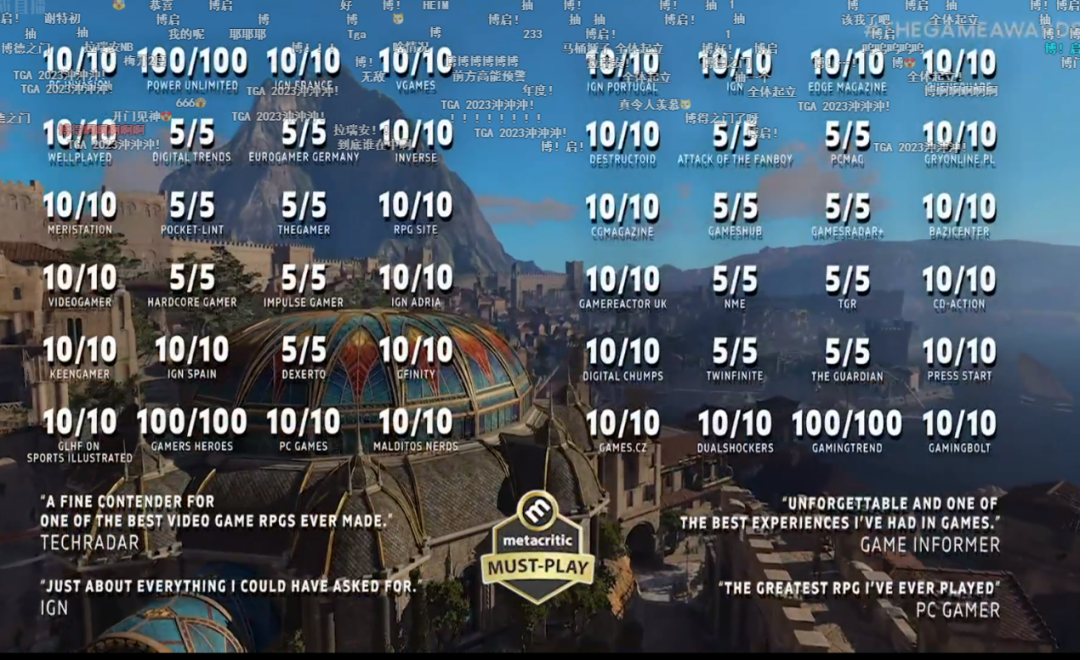
- The scoring wall of Baldur’s Gate 3 on display at the TGA Awards
And today, Baldur’s Gate 3 will have one more honor etched into its laurels: the 2023 TGA Game of the Year.
Post-Day Talk
On Dec. 1, four months after Baldur’s Gate 3’s release, Larian updated patch five “more times than I can count.”
In the first version of Baldur’s Gate 3, after the destruction of the Nether Brain and the rescue of the world, the game did not leave players with many memorable moments, a few sentences, a few lines, the friendship of the group was over for the time being, and the salvation team went their separate ways with their own beliefs and regrets.
Now Patch 5 brings players a reunion, a few brand new episodes, some CG animations that everyone wants to see, and Larian’s unreserved sincerity.
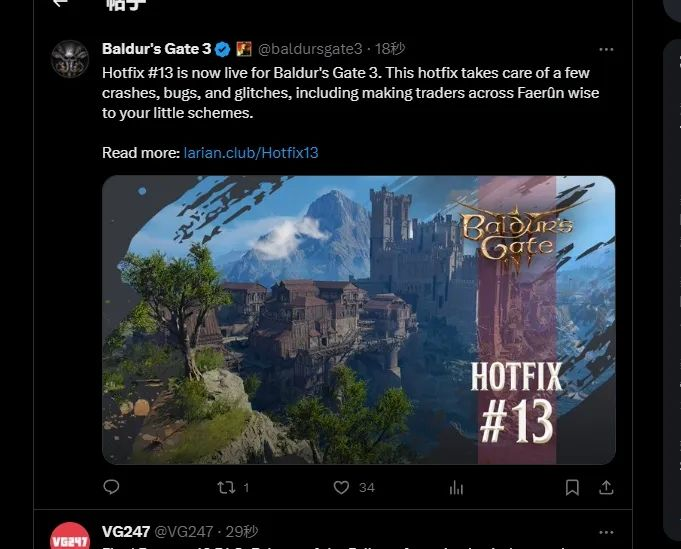
- Even today at the TGA Awards Baldur’s Gate 3 was still releasing hot fixes
Some gamers wondered why Larian is continuing to operate and insist on updates even though Baldur’s Gate 3 has been so successful.
But persistence never requires any particular reason. Swain nailed this simple truth in an interview after the release of Divinity: Original Sin 2: “The reason for persistence is because I believe that what we do pays off in the end.”
Twenty-six years ago, Swain had a dream in his dilapidated office that he was wearing armor and riding a flying dragon in the sky, and he set a goal to “make an RPG that overlooks everything” and continued to work towards it for the rest of his life.
Twenty-six years later, his dream has come true and he has conquered everyone with his game. Millions of gamers from around the world gathered today to see Swain crowned in his armor.
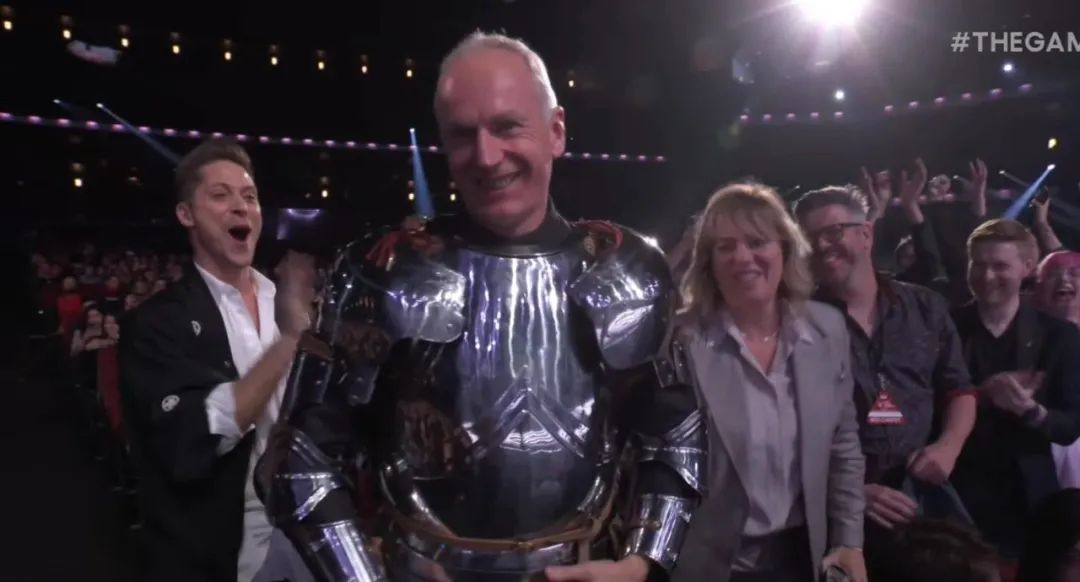
That may be the end of the story of Baldur’s Gate 3 for now. But looking back at Larrian, the studio that emerged from the shadow of death, over the bumps and bruises of the first half of its life, it’s all just beginning for them.
Reference:


